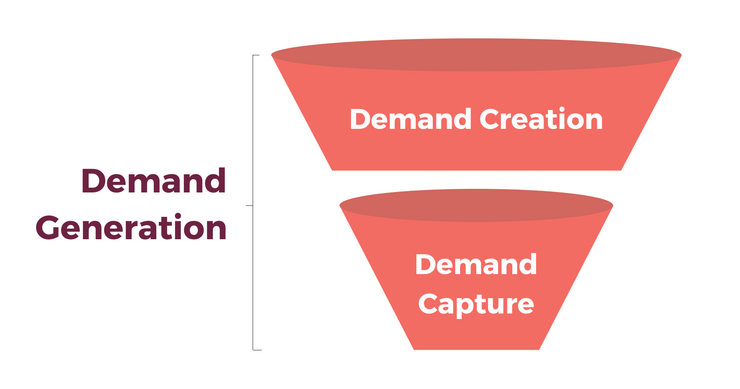Demand generation is an important part of any successful business-to-business (B2B) organization. It involves creating demand for a product or service, as well as capturing that demand to convert it into sales. In this blog, we will explore how businesses can use both demand creation and demand capture strategies to enhance their overall success in the B2B industry.
What is Demand Generation?
Before discussing ways to improve your company’s performance through effective demand generation techniques, let us first define what exactly “demand generation” means. It is generating interest among potential customers about a particular product or service offered by your company. This includes activities such as marketing campaigns, lead nurturing efforts, content development initiatives, etc., all aimed at driving customer engagement and ultimately converting leads into paying customers.
What Are the Different Demand Generation Strategies?
There are two main types of strategies used when engaging in demand generation: demand creation and demand capture. Let us look at each one separately:
Demand Creation: This type of strategy focuses on developing new sources of revenue by targeting untapped markets or introducing innovative products/services that appeal to existing customers who may not have been aware before now about these offerings from your company. Examples include launching targeted advertising campaigns via social media platforms like Facebook or Twitter; using search engine optimization (SEO) tactics; attending trade shows; taking part in webinars; hosting events etc., all designed to create awareness around your brand and generate more qualified leads for conversion later on down the line.
Demand Capture: As its name implies, this approach seeks existing opportunities within current customer bases—either those you already have established relationships with or ones you might gain if given enough exposure—so that they become loyal buyers over time instead of just one time purchasers only interested in making quick purchases without forming lasting connections with your business model itself.
How Can You Enhance Your Company’s Performance With Effective Use Of Both Strategies?
By combining both approaches together effectively—i.e., creating new sources while also capitalizing on pre-existing ones—companies can maximize their chances for success within today’s competitive B2B environment, where competition is fierce across multiple industries worldwide.
Here are some tips:
Create A Comprehensive Plan That Includes Both Tactics: Create a comprehensive plan incorporating elements from both sides prior to starting any kind of campaign-related activity. Doing so ensures maximum efficiency since it will lead to optimum use of resources focused towards achieving specific goals set beforehand based on research conducted regarding target audiences’ needs and wants, budget availability, etc. Having clear objectives helps measure progress made a long way, which allows course corrections accordingly whenever needed.
Develop Quality Content To Appeal To Target Audiences: Developing quality content tailored towards appealing to desired demographics goes a long way when attempting to attract the attention necessary to drive conversions. Whether blog posts, videos, infographics, etc., providing relevant information people actually care about increases the likelihood of them taking the action required to complete the purchase cycle. Using SEO best practices further increases visibility online, thus leading to even higher levels of engagement than originally expected.
Conclusion:
Enhancing performance within the b2b sector requires careful planning and execution. Due complexity involved in various aspects needs to be considered in order to succeed. You should avoid a complacent approach at all costs and ensure due diligence for achieving overall better results. Strategic planning and flawless execution will give you a healthy edge. Combining the power of both demands, creation, and demand capture provides a great opportunity to capitalize resources to the fullest possible extent to achieve the goal of increased profit margins and overall results every single quarter year after year!





